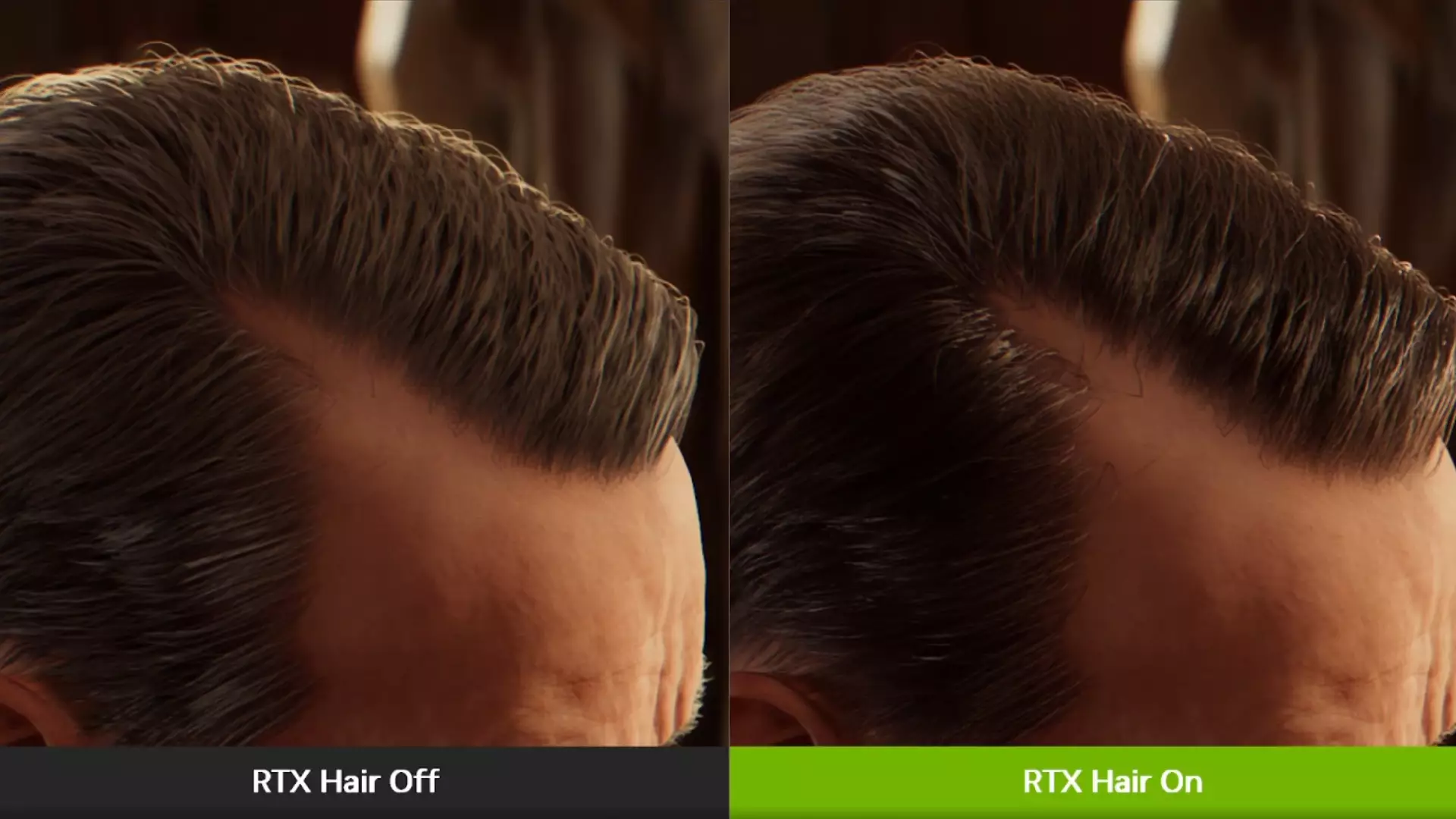In the rapidly evolving world of video game graphics, the quest for realism is relentless. Among the many visual elements developers strive to perfect, hair remains one of the most complex and elusive. Historically, rendering convincing strands of hair has been hampered by technical limitations, resulting in visuals that often look stiff, grainy, or outright unnatural. Nvidia’s latest innovation—RTX Hair—aims to shatter these barriers and set a new benchmark in digital realism. Unlike previous methods that relied heavily on resource-intensive geometric approximation, RTX Hair introduces a fundamentally different approach that marries aesthetic finesse with performance efficiency. It isn’t merely a shiny new feature; it’s a potential game-changer capable of transforming the way we perceive character personalities and storytelling in interactive media.
Breaking Down the Technology: From Geometry to Spheres
At the core of Nvidia’s RTX Hair lies a revolutionary rendering primitive called Linear Swept Spheres (LSS). Traditional hair rendering techniques model each strand as a series of connected triangles—an approach that quickly becomes computationally prohibitive as realism scales up. This method often results in jagged edges, flickering shadows, and a significant performance cost. RTX Hair departs from this paradigm by representing each hair strand as a smooth, continuous shape built from LSS primitives. This approach allows for more accurate shapes that mimic natural hair contours without the excessive geometry load. Even more impressive is the technology’s ability to optimize the lighting and shadowing processes, producing highlights, depth, and shadow intricacies that rival real-world hair. For gamers and developers, this means achieving high-fidelity visuals without sacrificing frame rates or VRAM efficiency, a feat that was nearly impossible with past techniques such as Nvidia HairWorks.
From Past Failures to Future Potential
Anyone familiar with Nvidia’s history in hair simulation, such as the notorious HairWorks system, will recall a mixed legacy—beautiful in concept but demanding in execution. HairWorks, used extensively in titles like The Witcher 3, demonstrated that with sufficient computational power, compelling hair effects are feasible. However, it often hampered performance and was criticized for its resource-heavy nature. RTX Hair seems poised to address these issues head-on. Early demonstrations suggest a significant leap forward—not only in realism but in efficiency. If the promised updates deliver on their potential, video game developers can incorporate more natural, detailed hair without fearing the dreaded decline into choppiness and lag. This technological shift reflects a broader trend in gaming: the pursuit of hyperrealism synced with sustainable performance. The future of character design might be less about trade-offs and more about creating immersive worlds where every strand of hair contributes to storytelling authenticity.
The Cultural and Artistic Implications
The visual fidelity of hair isn’t merely a matter of aesthetics; it deeply influences perception and character engagement. Artists and designers have long struggled to balance stylized art with realistic detail. With RTX Hair’s potential for lifelike illuminations, shadows, and physics, creatives will have an expanded palette to craft distinct, emotionally resonant characters. Imagine a protagonist with flowing, dynamically lit hair that responds convincingly to environmental changes—be it wind, rain, or torchlight. Such realism extends beyond aesthetics; it impacts performance, narrative immersion, and emotional investment. Moreover, this technology prompts a reevaluation of character design norms—where hair is no longer just a cosmetic detail but a vital component of storytelling that conveys personality, mood, and cultural identity convincingly. As the technology matures, it may usher in a new era where digital hair isn’t just an afterthought but a signature aspect of character identity.
Challenges and Expectations: The Road Ahead
Despite the excitement, skepticism remains justified. The history of technological advancements in gaming is riddled with promising innovations that falter in real-world application. RTX Hair’s success hinges on how effectively developers can integrate it into existing engines and workflows, and whether it truly achieves the performance benchmarks Nvidia promises. Moreover, the visual leap must be accompanied by supporting tools for artists to manipulate and perfect hair in creative workflows. Will RTX Hair become a standard feature adopted across various genres, or remain confined to high-end AAA titles? The answer depends largely on how accessible Nvidia makes this technology and whether developers see a tangible return on investment.
However, if Nvidia’s track record with innovations like DLSS is any indicator, there’s a strong likelihood that RTX Hair will push the boundaries of digital realism. It’s an exciting time for anyone invested in visual storytelling—an era where the glossy, shiny locks of digital characters might finally match the shimmering, flowing tresses of real life. In mastering the art of rendering each strand with such finesse, Nvidia isn’t just improving game graphics—they’re redefining the very essence of digital beauty and realism.

